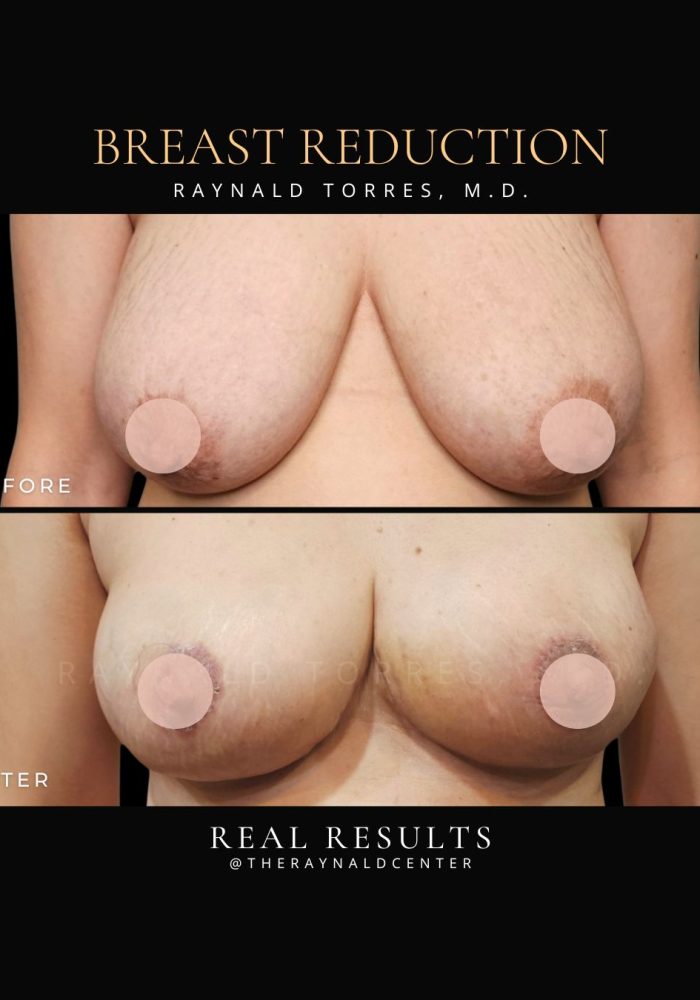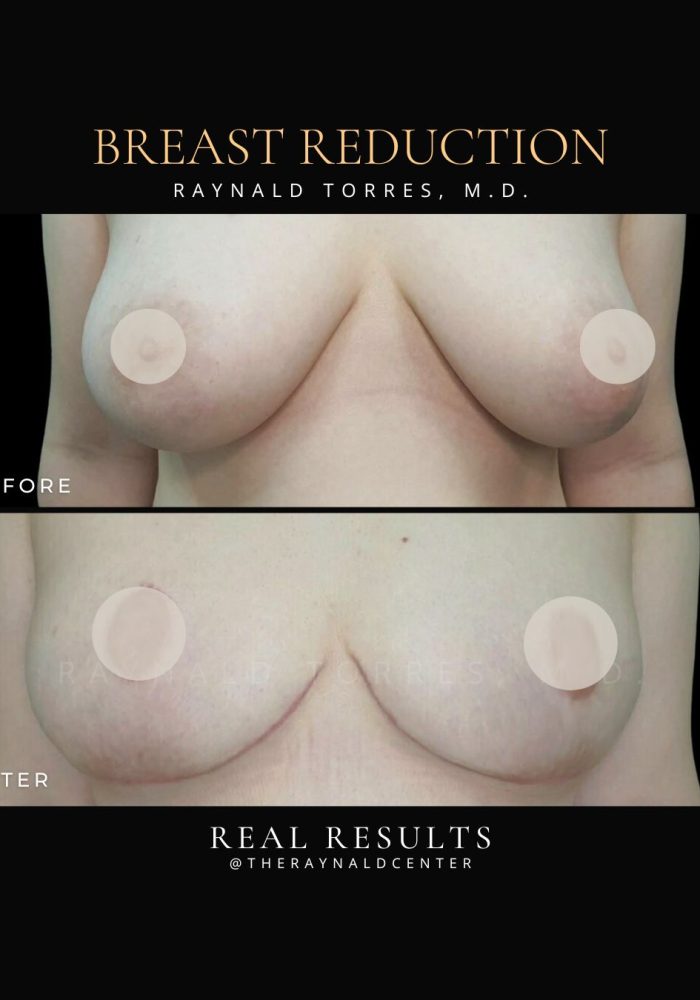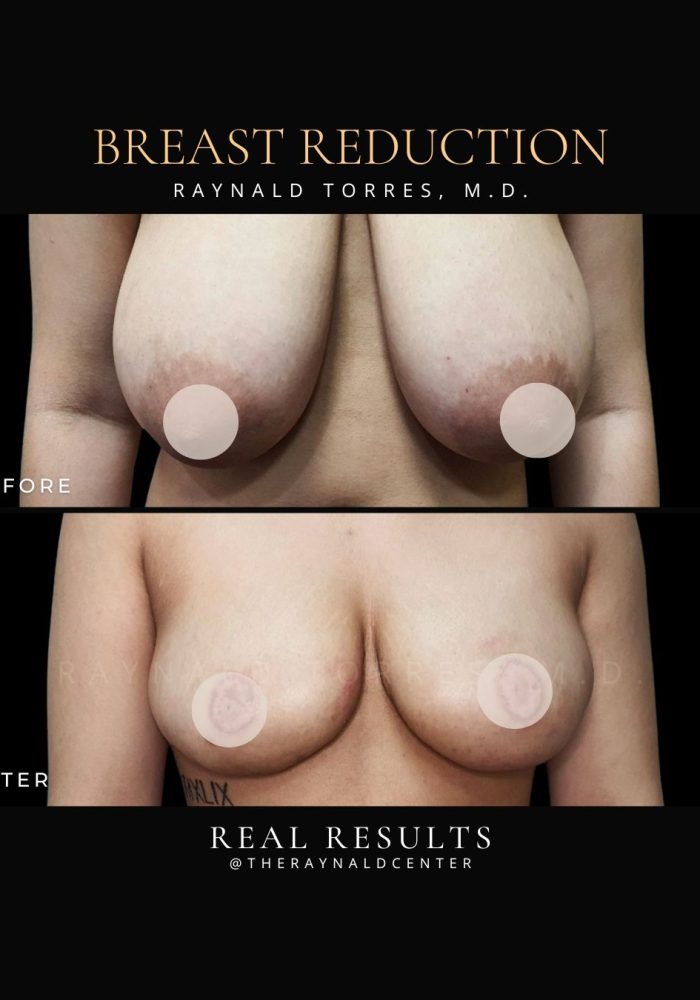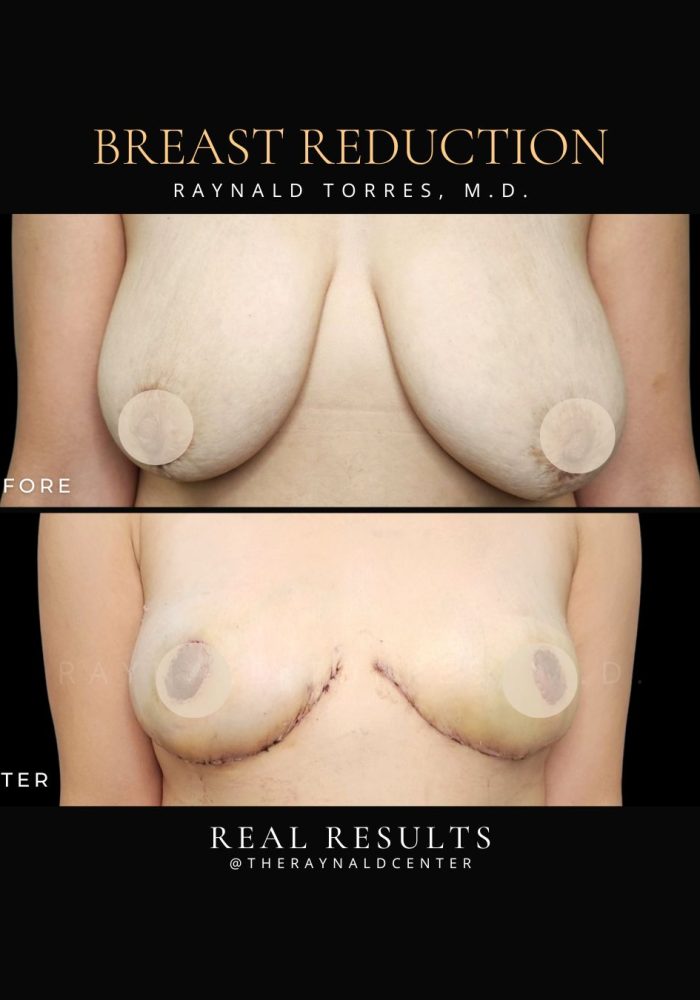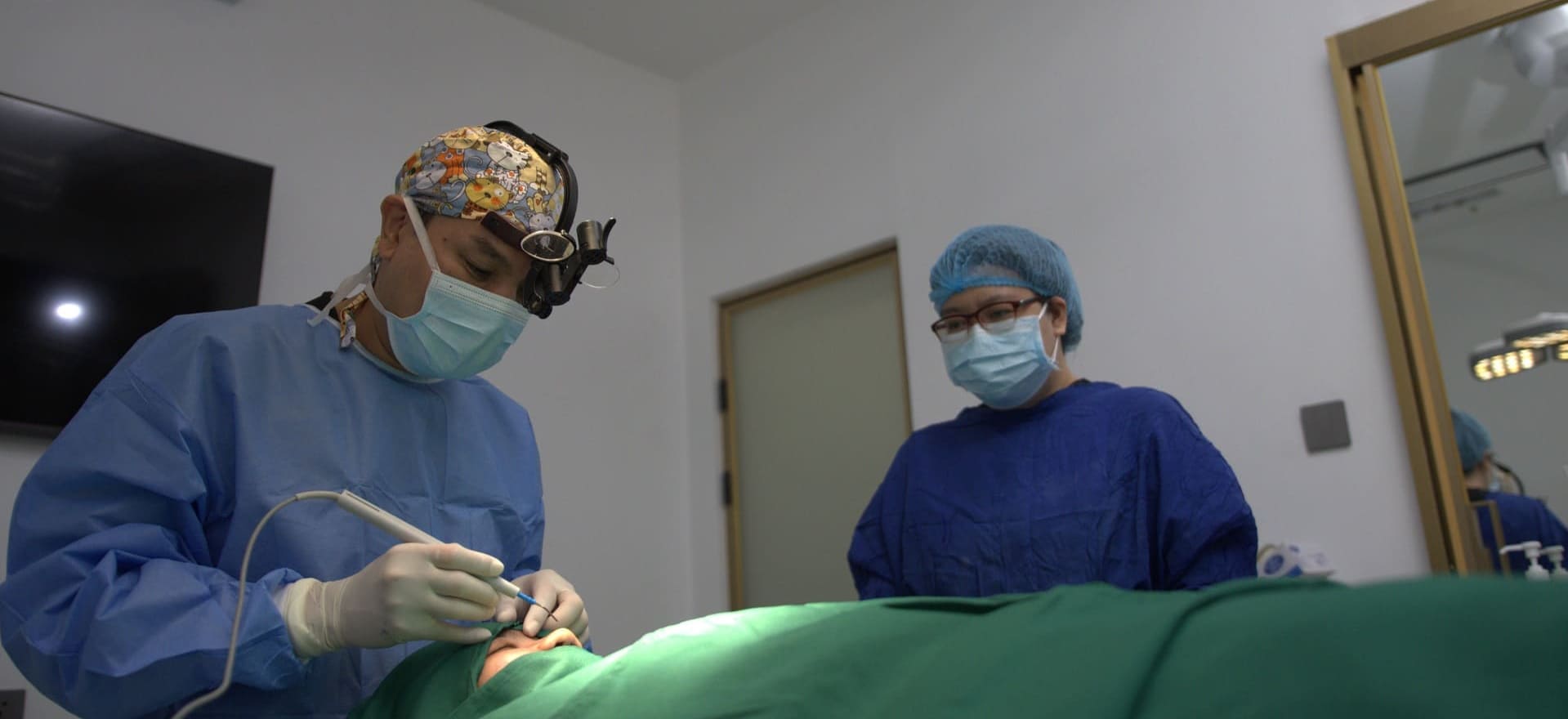
Breast Reduction – Horizontal Incision Technique for Natural Results
BEFORE AND AFTER
What is Breast Reduction?
Breast reduction is a life-changing procedure for many women who suffer from chronic back pain, shoulder grooves, rashes, or difficulty with physical activity due to overly large breasts. My approach to breast reduction focuses on achieving a natural shape with minimal visible scarring, using a horizontal incision technique with an inferior pedicle for nipple-areolar repositioning.
Unlike the traditional Wise pattern (anchor scar) method, which leaves a vertical scar running down the breast, my technique avoids that vertical component altogether. Instead, the scar is discreetly placed under the breast crease, making it virtually invisible when standing or wearing clothing. The result is a softer, more natural breast contour with significantly reduced scarring on the front of the breast.
This technique is suitable for both moderate and very large breasts. For extremely large and stretched breasts, where the blood supply to the nipple may be compromised, I often perform a free nipple graft. In this method, the nipple-areolar complex is safely grafted into a new, more aesthetic position on the newly shaped breast. This ensures nipple survival, prevents necrosis, and leads to a more predictable healing process with less risk of complications.
Whether for comfort, posture, or improved self-confidence, breast reduction can have a profound impact on your quality of life. My goal is not only to reduce volume but also to reshape and lift the breasts, restoring balance to your body while minimizing scarring and preserving (or restoring) symmetry and proportion.
Pre-Procedure Guidelines
Proper preparation helps ensure a smoother surgery and optimal recovery.
1. Medical Clearance & Laboratory Tests
Complete all necessary pre-surgical lab tests and clearances.
Disclose all medications, supplements, and pre-existing conditions (e.g., hypertension, diabetes, clotting disorders).
2. Medications
Stop taking blood-thinning medications (e.g., aspirin, ibuprofen, NSAIDs), vitamin E, and herbal supplements 7 days before surgery unless otherwise advised.
Continue prescription maintenance medications unless directed otherwise.
Inform your surgeon of any newly started medications or over-the-counter products.
3. Lifestyle & Personal Preparation
No smoking or vaping 2 weeks before and after surgery — nicotine affects blood flow and healing.
Avoid alcohol 48 hours before surgery.
Prepare loose, comfortable clothing (preferably with front buttons or zippers).
Arrange for someone to accompany you on the day of surgery and assist during your initial recovery.
4. Night Before / Day of Surgery
Do not eat or drink anything (including water) after midnight if you’ll undergo general anesthesia.
Take a full-body shower the night before or morning of surgery using antibacterial soap.
Remove all nail polish, piercings, contact lenses, and makeup before arriving at the clinic.
Post Procedure Guidelines
Following your surgeon’s instructions is essential for safe healing and optimal aesthetic outcomes.
1. Dressings & Compression
Keep the surgical bandage and compression garment in place for at least 24–48 hours as instructed.
After removal, wear a post-surgical bra or compression garment 24/7 for the first 2 weeks, then during daytime for up to 6–8 weeks.
Avoid underwire bras until fully cleared by your surgeon.
2. Wound Care
Clean the incision line gently using sterile water or hydrogen peroxide on cotton.
Pat the area dry and do not apply any creams, powders, or ointments unless prescribed.
Monitor for signs of infection such as redness, swelling, or unusual discharge.
Sutures are typically removed after 10–14 days, or as advised.
3. Pain Management
Mild to moderate pain is normal and should improve within several days.
Take all prescribed pain medications and antibiotics exactly as directed.
Avoid alcohol while taking medications.
Contact your doctor if you experience severe or worsening pain not relieved by medication.
4. Swelling, Bruising & Sensation
Expect swelling, bruising, and tightness in the breast area. These will gradually subside over several weeks.
Temporary numbness or tingling is common, especially around the incision.
Use cold compresses during the first 48 hours to help reduce swelling (avoid direct contact with the skin).
5. Activity & Movement
Light walking is encouraged as soon as you are able to reduce risk of blood clots.
Avoid lifting arms above your head, lifting heavy objects, or strenuous activity for 4–6 weeks.
Sleep on your back with your head and chest slightly elevated using 2–3 pillows.
6. Scar & Skin Care
Keep incisions out of the sun for at least 6 weeks. Use SPF or cover the area when outdoors.
Once incisions are healed, your surgeon may recommend a scar management product (e.g., silicone gel or tape).
7. Return to Normal Activities
Most patients can resume light daily activities within 1 week.
You may return to work (non-physical) after 7–10 days depending on comfort.
Resume exercise and more active movement after 4–6 weeks, with clearance from your surgeon.

